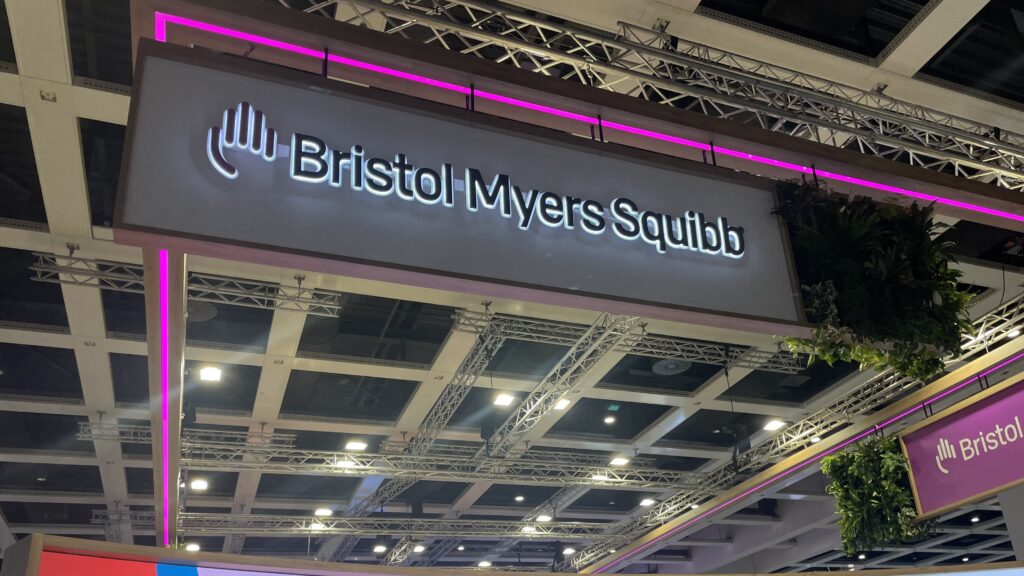Bristol Myers Squibb has pointed to a 55% overall response rate from one cohort of an early-stage study of its EGFRxHER3 antibody-drug conjugate as evidence the pharma can “stay ahead of the competition.”
While China-only data for the SystImmune-licensed asset, called izalontamab brengitecan or iza-bren, had previously been made public, today marks the first readout from a global trial of the ADC.
The findings, unveiled at the 2025 European Society for Medical Oncology (ESMO) Congress in Berlin, come from a phase 1 study that saw 113 patients across a range of cancers receive various dosing regimens as of a March 20 cutoff.
In its ESMO session documents, the pharma singled out the 20 patients who received the 2.5-mg/kg dose of iza-bren on Day 1 and Day 8 of an every-three-week cycle. In this group, investigators recorded a confirmed overall response rate (cORR) of 55%, BMS explained.
Drilling down into different cancer types, the ESMO abstract detailed a 42.9% cORR for the 14 patients in this cohort with non-small cell lung cancer (NSCLC) and a 100% cORR for the three patients in the cohort with breast cancer.
Of the 14 NSCLC patients in the trial arm, 11 had EGFR-mutant cancer and 3 had EGFR-wildtype cancer. The response rates for those groups were 36.4% and 66.7%, respectively.
“It was important for us to see the consistency of the data in global patients with the China data sets,” Anne Kerber, M.D., head of development, hematology, oncology and cell therapy at BMS, told Fierce in an interview. “That’s what we do see—and that’s what is very encouraging for us.”
Across the entire study, the most frequent treatment-related adverse events were hematologic—namely neutropenia, anemia and thrombocytopenia—for which cases graded 3 or above were recorded in 55%, 28% and 12% of patients, respectively.
Kerber partly attributed these adverse event rates to the fact that these patients have already gone through multiple lines of treatment and come from a population with an “impaired bone marrow reserve.” She also noted that, in order to better understand iza-bren’s safety profile, patients hadn’t received granulocyte-colony-stimulating factor prophylaxis, which is otherwise used to reduce the severity of chemotherapy-induced neutropenia.
“This is something that will be done in the pivotal studies, and that is expected to have an impact on those rates,” she explained.
Related
Iza-bren is designed to engage EGFR and HER3, receptors involved in the survival and proliferation of epithelial tumors, and deliver a cytotoxic payload to cells that express the proteins. BMS is already evaluating the asset in a global phase 2/3 study as a first-line treatment for triple-negative breast cancer and bladder cancer as well as assessing the ADC for lung cancer.
The pharma currently expects the 2.5-mg/kg dose to be the regimen that is taken forward for the iza-bren program, according to Kerber, but the company is yet to make a final decision.
BMS paid $800 million upfront to SystImmune for the ex-China rights to iza-bren as part of a deal worth up to $8.4 billion. Heading into ESMO, analysts at William Blair said they considered iza-bren to be “one of the more underappreciated assets” in BMS’ oncology pipeline.
“We have been encouraged by the efficacy of iza-bren across multiple indications to date,” the analysts said in a note published Oct. 2. “Demonstrating similar efficacy and safety in global studies will be key to translating the likelihood of success in the ongoing phase 3 studies based on the available China-only clinical datasets.”
When asked by Kerber whether she agreed that iza-bren was one of the secret weapons in BMS’ cancer portfolio, the exec said the pharma “certainly would hope” so. To back up this view, Kerber name-checked iza-bren’s potential in EGFR-mutant patients as well as “very encouraging” data in bladder cancer.
Of course, iza-bren isn’t the only EGFRxHER3 ADC in development. Duality Biotherapeutics and Avenzo Therapeutics’ candidate secured FDA clearance to start a phase 1/2 trial in May. Meanwhile, Biocytogen published preclinical data on a candidate last year, and CStone Pharmaceuticals shared preclinical data on its contender in May.
These candidates are on BMS’ radar, according to Kerber, but it doesn’t sound like the pharma is too worried by the less-advanced competitors.
“We always look to the competition to make sure that we develop our assets in a differentiated way,” she told Fierce.
“Right now, given the breadth of the data that we have at this point in time not only in China, but also in the global population, I think we’re pretty confident that we will be able to stay ahead of the competition,” Kerber added.


